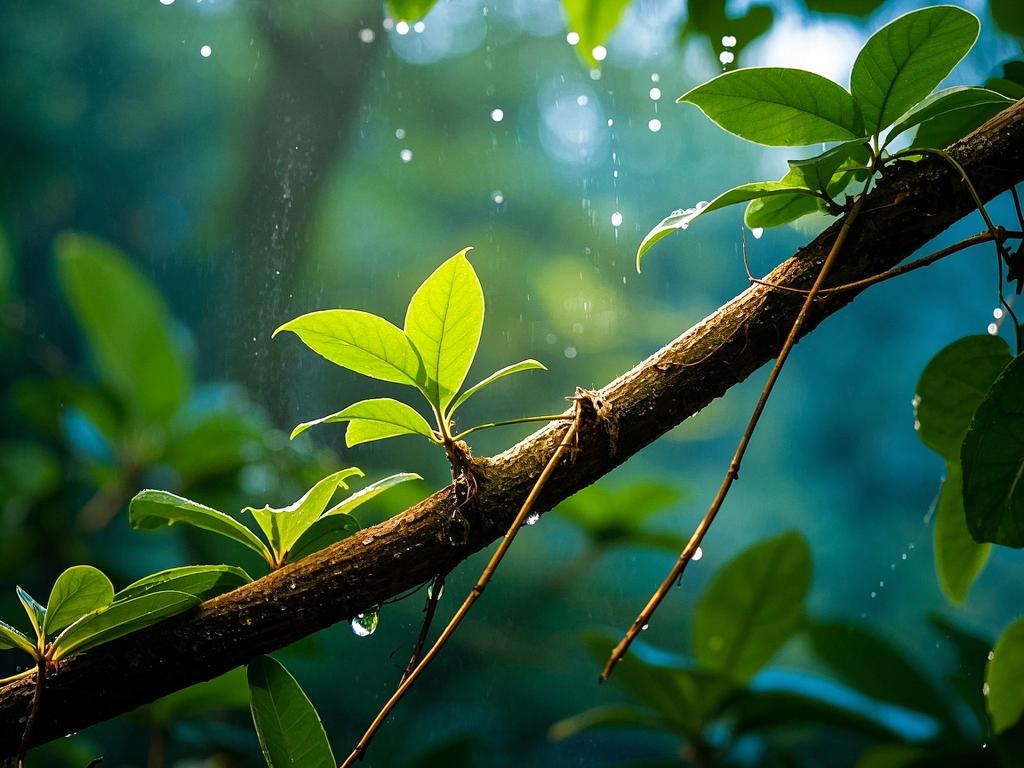
# The Tropical Rainforests of Central America: A Struggle for Survival
The tropical rainforests of Central America are a realm of unparalleled biodiversity, a living tapestry woven with millions of species, each playing a vital role in the delicate balance of nature. These lush ecosystems, spanning countries like Costa Rica, Panama, and Nicaragua, are not just green landscapes; they are the beating hearts of the planet's ecological symphony. But today, they stand on the precipice of a survival crisis, a battle against forces that threaten to silence their harmonious melodies forever.
## A Biodiversity Hotspot in Jeopardy
Central America's tropical rainforests are home to an astonishing array of life forms. It is estimated that over 5% of the world's known species inhabit these relatively small areas. From the resplendent quetzal, with its iridescent plumage that seems to be plucked from a mythical realm, to the tiny poison dart frogs, whose vibrant colors serve as a warning of their deadly toxins, every creature here is a testament to evolution's ingenuity.
The rainforests are a treasure trove of plant diversity as well. Vast canopies are filled with towering trees, some reaching heights of over 100 meters. These trees support a complex web of epiphytes, such as orchids and bromeliads, which cling to their branches, extracting nutrients from the air and rain. The understory is a riot of ferns, shrubs, and vines, creating a dense and mysterious world beneath the forest roof.
However, this biodiversity is under relentless assault. Deforestation rates in Central America have been alarmingly high in recent decades. According to some studies, large swaths of rainforest are being cleared at a rate equivalent to several football fields every minute. This destruction is driven by multiple factors, each more menacing than the last.
## The Culprits Behind the Crisis
One of the primary drivers of deforestation is agriculture, particularly the expansion of large-scale monoculture plantations. Crops like palm oil, soybeans, and bananas are in high demand globally, and the pursuit of profit has led to the conversion of vast areas of rainforest into farmland. Palm oil, in particular, has become a major villain. It is found in countless products, from food to cosmetics, and its production has contributed significantly to the loss of rainforest habitats.
Logging is another significant threat. The valuable hardwoods found in Central America's rainforests, such as mahogany and teak, are highly sought after in international markets. Illegal logging operations often go undetected, stripping the forests of their most valuable resources and leaving behind a scarred landscape.
Urbanization and infrastructure development also play a role. As cities grow and roads are built, more land is needed for housing, industry, and transportation. This encroachment into the rainforest fragments habitats, isolating species and making it difficult for them to survive and reproduce.
## The Ecological Ripple Effects
The destruction of the tropical rainforests has far-reaching ecological consequences. These forests are not just a collection of trees and animals; they are integral to the planet's climate regulation. Rainforests absorb vast amounts of carbon dioxide, a major greenhouse gas, helping to mitigate the effects of climate change. When these forests are cut down, the carbon stored within them is released back into the atmosphere, exacerbating global warming.
The loss of biodiversity also has a cascading effect on the entire ecosystem. Many species rely on others for food, shelter, or pollination. When one species disappears, it can trigger a chain reaction that disrupts the delicate balance of the ecosystem. For example, the decline of pollinator species, such as bees and butterflies, due to habitat loss, could have a devastating impact on the reproduction of countless plant species, further threatening the survival of both plants and the animals that depend on them.
## The Human Element: A Double-Edged Sword
While the threats to the rainforests are predominantly human-driven, there is also a glimmer of hope in the form of local communities. In many parts of Central America, indigenous groups and local communities have a deep connection to the rainforest. They have traditional knowledge and practices that have allowed them to coexist with the ecosystem for centuries.
However, these communities are also facing challenges. The pressures of modernization, including access to education, healthcare, and economic opportunities, often force them to make choices that may conflict with their traditional ways of life. For example, some may be lured into participating in deforestation activities to earn quick money, even though they understand the long-term consequences for their environment.
## A Call to Action
The tropical rainforests of Central America are at a crossroads. We, as global citizens, have a moral obligation to act. Governments need to enforce stricter environmental regulations, cracking down on illegal logging and unsustainable agriculture. International cooperation is also crucial. Wealthier nations should support Central American countries in their efforts to protect their rainforests through financial aid, technology transfer, and capacity building.
Conservation organizations must continue to raise awareness about the importance of these rainforests. Through education and outreach programs, we can inspire the next generation to become stewards of the environment. Consumers also have a role to play. By choosing products that are sustainably sourced and avoiding those linked to deforestation, we can send a powerful message to industries that destroying the rainforests is not acceptable.
The tropical rainforests of Central America are not just a natural wonder; they are the lungs of our planet, a source of countless resources, and a home to millions of species. Let us not stand idly by as they fight for survival. It is time for us to take action, to be the heroes that these precious ecosystems deserve, and to ensure that the symphony of life in Central America's rainforests continues to resonate for generations to come. Will you join the fight?

